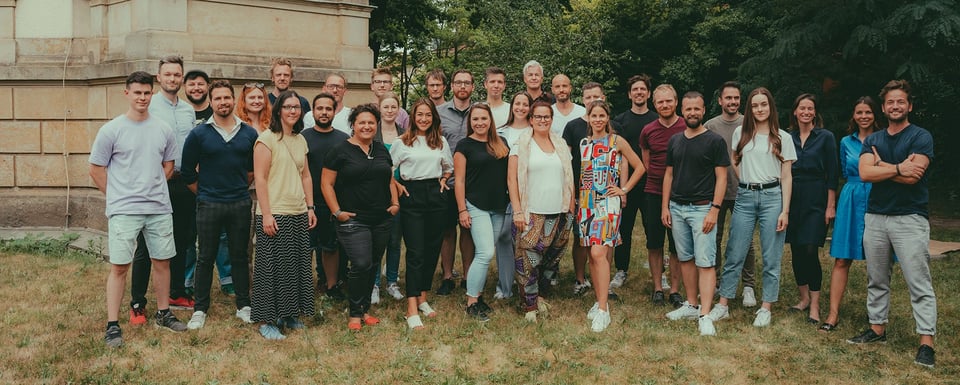perks and challenges of remote working - company assets at home
Due to the current Covid pandemic, more and more people are working from home. But even before these special circumstances, the more and more people starting leaning toward remote working as their preferred work model. This way of working offers many perks, such as avoiding long commutes or saving office space, but it also has real challenges. One specific challenge, is how a company can keep track of its assets when these are taken outside the office by employees. In this blog post we'll show you...
... what 'remote working' is
... what benefits this can have for both employees and employers
... what challenges this style of working brings with it
... how to overcome these challenges
... how to overcome the specific challenge of keeping track of company assets outside the office

Remote Working - What does that mean?
The name is the game - 'remote working' is nothing else, than working from a place that is not the office. In recent years this style of working has gained popularity, due to technological advancements in communication and cloud based systems.
Especially during the recent pandemic the word 'home office' has been gaining traction, but this is only one specific kind of remote working. Instead of working from their office, some people are choosing to work from co-working spaces closer to home, thus saving valuable commute time. The most adventurous kind of remote workers are definitely the digital nomads. These are constantly traveling from place to place and working from any place they choose, no matter if it's in their own camper van, the airport or on a beach in Thailand. But regardless of whether you work from home, a co-working space or on the go: flexibility is the most integral part of any variety of remote working.

Benefits for employees and employers
Speaking of flexibility: this is the greatest benefit remote working has to offer. According to study conducted by the IWG, almost half of all employees now choose to work remotely for at least a few days out of the week. The reasons for choosing to do this are multitude: Some just do not want to bother with long commute times. Others have to move for their partners or families and do not want to find a new job. For people with chronic illnesses or other disabilities, working remotely enables a better, more inclusive work environment. Additionally, not having to commute minimizes CO2 emissions and personal costs, as car rides or public transport use to and from work are eliminated or cut down on.
Employers can benefit greatly from this work model as well. Burnout is one of the most common and most expensive illnesses that lead to partial or total inability to work. While it takes a long time and a lot of money to treat, it can easily be prevented, most importantly with a better work-life-balance. This encompasses shorter or nonexistent commutes as well as comfortable working environment, which remote working can easily provide. It also allows for a broader spectrum of potential employees, as you can hire the absolute best candidate for the job, not just the best candidate who lives in the area. Furthermore, there is a large potential to save money at the office: When employees work from home on a regular schedule, it is possible to rent smaller office spaces or save money on catering for the staff.

The various challenges
Next to all the wonderful chances this work model has to offer, there are also real challenges it poses, the biggest one being that simply not all jobs are fit for remote working. An EMT will never be able to take care of a crash victim from afar. Only ever conversing online can also make things a bit unpersonal between colleagues. Of course no one is constantly interacting at the office, but small talks here and there at the coffee machine or over lunch can be very conducive to a positive work environment. With the line of personal and professional line blurred, it also becomes unclear what an employee should have to pay for. If the company would otherwise offer a free lunch, desk, laptop and keyboard at work, who pays for it when all those things are outside the office?
Easily managing the challenges
The problem that not all jobs are suited for remote working doesn't appear universally solvable at first glance. However, in the last couple of years many jobs that seemed to be tied to a specific place have been digitized with modern solutions. Online doctors, online therapy and online interior designers are emerging thanks to newer, safer communication technology. And who knows, with the ever-advancing technologies of today, even more jobs could be done remotely in the future! Due to modern communication methods, the problem of a lack of bonding between co-workers is also easily solvable. Virtual meetings don't always have to be about work! The format of digital coffee breaks for example, is an excellent way of fostering personal relationships between employees.

The specific challenge of company assets outside the office
The final hurdle that remote working presents, is who should carry which costs. Currently, there are no standardized rules; every company must decide this for themselves. However, the study conducted by the IWG listed above, shows that good conditions for remote working has a strong influence on a worker's decision if they are deciding between workplaces. Therefore, it makes absolute sense for a company to offer the best work conditions they can. This can include a variety of different approaches, such as renting co-working spaces outside the office, a "lunch allowance", or providing necessary equipment, such as laptops, desks, desk chairs, headsets and much more. Especially when providing equipment, there is the question of how to keep track of assets outside the office efficiently. Depending on the regulation of the company's location, an inventory of the company's assets must be submitted in different frequencies.
To avoid every employee having to send in an e-mail every so often including a typed-up list of all the objects they have at home, a company may implement a digital asset management system. Good inventory management systems can be used from anywhere, by anyone using an app on the phone. This allows every employee to easily scan each item they have at home and sync it to the central database, whenever the company needs to take stock or the employee needs to note any changes. A digital system therefore creates a simple, easy-to-access, centralized overview of any company assets, no matter where they are. If necessary, a system like this could also allow employees to easily swap equipment when they need to, for example if they wish to borrow a headset for a virtual conference or redecorated and want a different colored chair. Patrick Boden, Co-Founder of seventhings says: "A digital asset management system allows companies to solve the problems of tomorrow, today."

Are you tired of sifting through countless Excel sheets trying to find that one keyboard someone took? Do you want to know how an asset management system can make business more successful? Then start your 14 days free trial now!
Not ready to take that next step yet? No problem! Visit our Blog !


